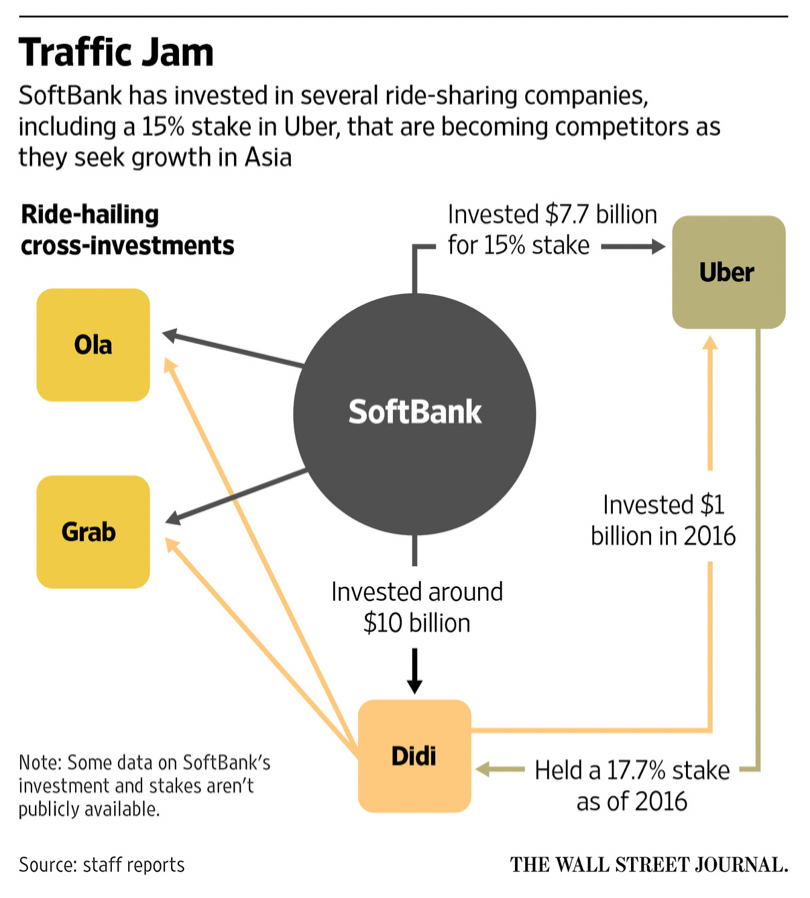Uber Stock: Defying Recessionary Trends? A Deeper Look

Table of Contents
Uber's Diversified Revenue Streams: A Buffer Against Economic Slowdowns
Uber's success isn't solely reliant on its ride-sharing services. Its diversified revenue streams act as a crucial buffer against economic downturns, making it a more resilient investment than some might initially assume.
Ride-Sharing Remains a Core Strength:
Despite economic uncertainty, essential travel remains relatively consistent. People still need to commute to work, visit doctors, and attend appointments, even during a recession. Uber leverages this consistent demand through several strategies:
- Dynamic Pricing: Uber's pricing models adjust to fluctuating demand, ensuring profitability even during periods of lower ridership.
- Increased Reliance on Ridesharing: Rising gas prices incentivize more people to choose ride-sharing over personal vehicle usage, boosting Uber's revenue.
- Market Expansion: Uber continues to expand into underserved markets globally, creating new revenue streams and mitigating the risk of reliance on any single region.
The Robust Growth of Uber Eats:
The food delivery sector has proven remarkably recession-resistant. During economic uncertainty, people often cut back on dining out but still desire convenience. Uber Eats capitalizes on this trend:
- Convenience Factor: The convenience of food delivery is a major draw, especially during stressful economic times.
- Strategic Partnerships: Uber Eats fosters partnerships with a wide range of restaurants, maximizing its market reach and customer base.
- Expansion Beyond Food: Uber is exploring delivery options beyond food, including groceries and other goods, diversifying its revenue streams further.
Freight and Other Emerging Businesses:
Uber's diversification extends beyond ride-sharing and food delivery. Its foray into freight transportation and other emerging businesses significantly reduces its overall risk profile:
- Freight Transportation: Capitalizing on the ongoing demands of the supply chain, Uber Freight offers a significant revenue stream less susceptible to economic fluctuations than ride-sharing.
- Micromobility: Investments in electric scooters and bikes tap into the growing micromobility market, offering alternative transportation solutions.
- Future Innovations: Uber continues to explore and invest in new mobility solutions, positioning itself for future growth opportunities.
Analyzing Uber's Financial Performance Amidst Economic Headwinds
Examining Uber's financial performance is crucial to assessing its recession-proof potential. A thorough analysis considers several key factors:
Key Financial Indicators:
- Revenue Growth: Analyzing quarterly revenue growth helps determine the company's overall financial health and trajectory.
- Profitability: Assessing profitability, including margins and operating income, reveals the efficiency of its operations.
- Debt Levels: Understanding Uber's debt burden is crucial in gauging its financial stability.
- Competitor Comparison: Benchmarking Uber's performance against competitors like Lyft provides a broader perspective on its position within the industry.
Investor Sentiment and Stock Price Trends:
Understanding investor sentiment is vital for evaluating Uber stock:
- Stock Price Fluctuations: Tracking stock price changes reflects investor confidence in the company's future.
- News and Events: Analyzing how news and events impact Uber's stock valuation provides insights into market perceptions.
- Analyst Ratings: Reviewing analyst ratings and predictions offers a professional perspective on potential future performance.
- Long-Term vs. Short-Term: It’s important to distinguish between short-term volatility and Uber's long-term growth potential.
Potential Risks and Challenges Facing Uber
While Uber exhibits resilience, several risks and challenges could impact its future performance:
Regulatory Hurdles and Legal Battles:
- Worker Classification: Ongoing debates regarding worker classification and labor regulations pose significant legal and financial challenges.
- Geographic Variations: Navigating differing regulations across various countries and states requires significant resources and adaptation.
- Legal Costs: Potential legal costs associated with these battles can impact profitability.
Competition and Market Saturation:
- Intense Competition: The ride-sharing and food delivery markets are fiercely competitive, with established players and new entrants constantly vying for market share.
- Maintaining a Competitive Edge: Uber must constantly innovate and adapt to maintain its competitive edge and prevent market share erosion.
- Evolving Consumer Preferences: Adapting to changes in consumer preferences and technological advancements is essential for long-term success.
Conclusion
Uber's performance in the face of current economic anxieties is noteworthy. Its diversified revenue streams and adaptability suggest a degree of recession-resistance. The strong presence in essential services like food delivery and the growing freight market adds to this perception. However, potential regulatory issues and competitive pressures must be considered. Before investing in Uber stock, thorough research and consultation with a financial advisor are crucial. Analyzing the complete picture and understanding the nuances of the market are vital when considering investing in Uber stock or similar recession-proof stocks. Remember to always conduct your own due diligence before investing in any stock, including Uber stock.

Featured Posts
-
 Knicks Brunson Suffers Ankle Injury Exits Lakers Game
May 17, 2025
Knicks Brunson Suffers Ankle Injury Exits Lakers Game
May 17, 2025 -
 Analyzing Uber Technologies Uber As A Long Term Investment
May 17, 2025
Analyzing Uber Technologies Uber As A Long Term Investment
May 17, 2025 -
 Student Loan Payments And Your Credit Score What You Need To Know
May 17, 2025
Student Loan Payments And Your Credit Score What You Need To Know
May 17, 2025 -
 Ancaman Houthi Serangan Rudal Ke Dubai Dan Abu Dhabi
May 17, 2025
Ancaman Houthi Serangan Rudal Ke Dubai Dan Abu Dhabi
May 17, 2025 -
 Last Chance Boston Celtics Championship Gear Under 20
May 17, 2025
Last Chance Boston Celtics Championship Gear Under 20
May 17, 2025
